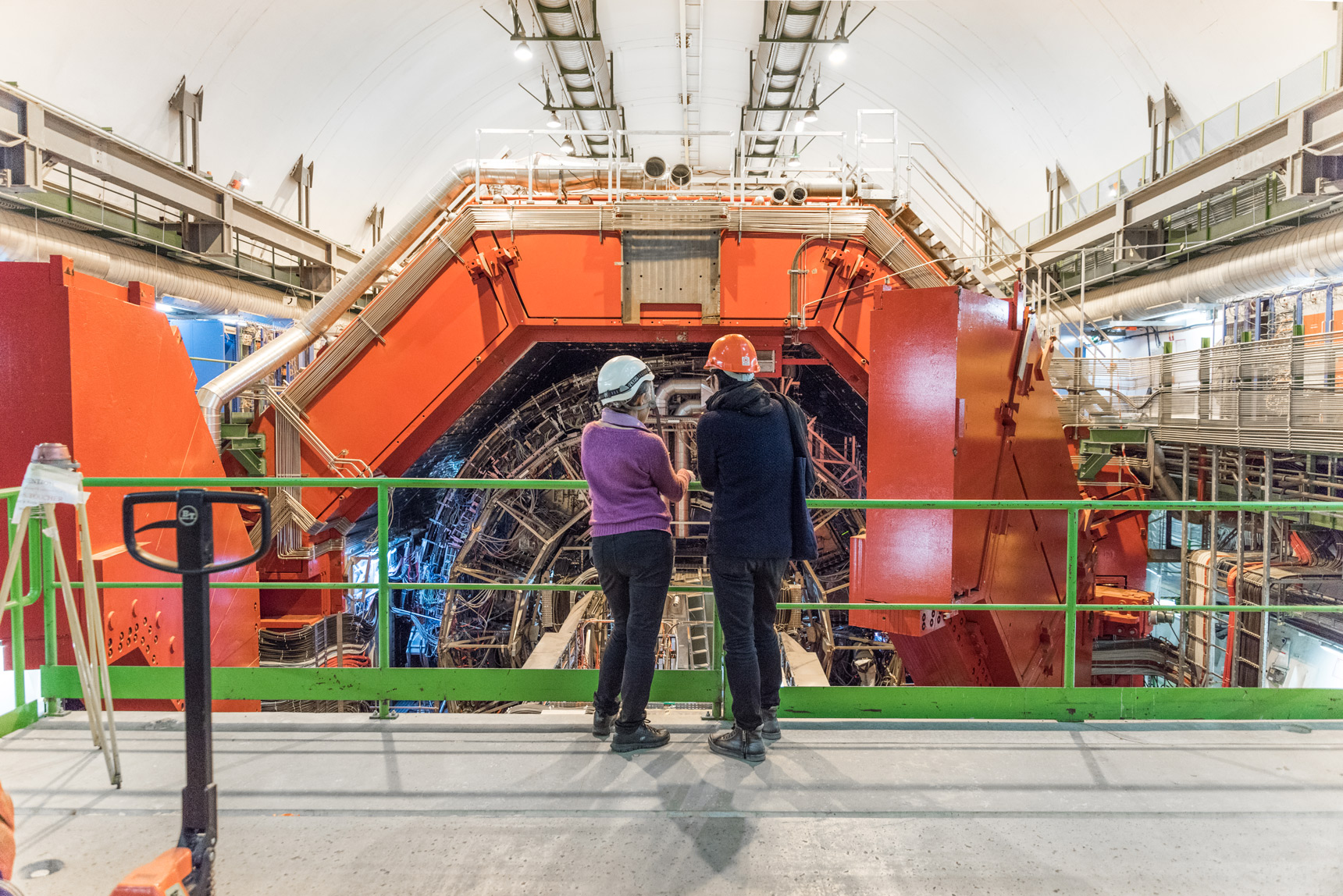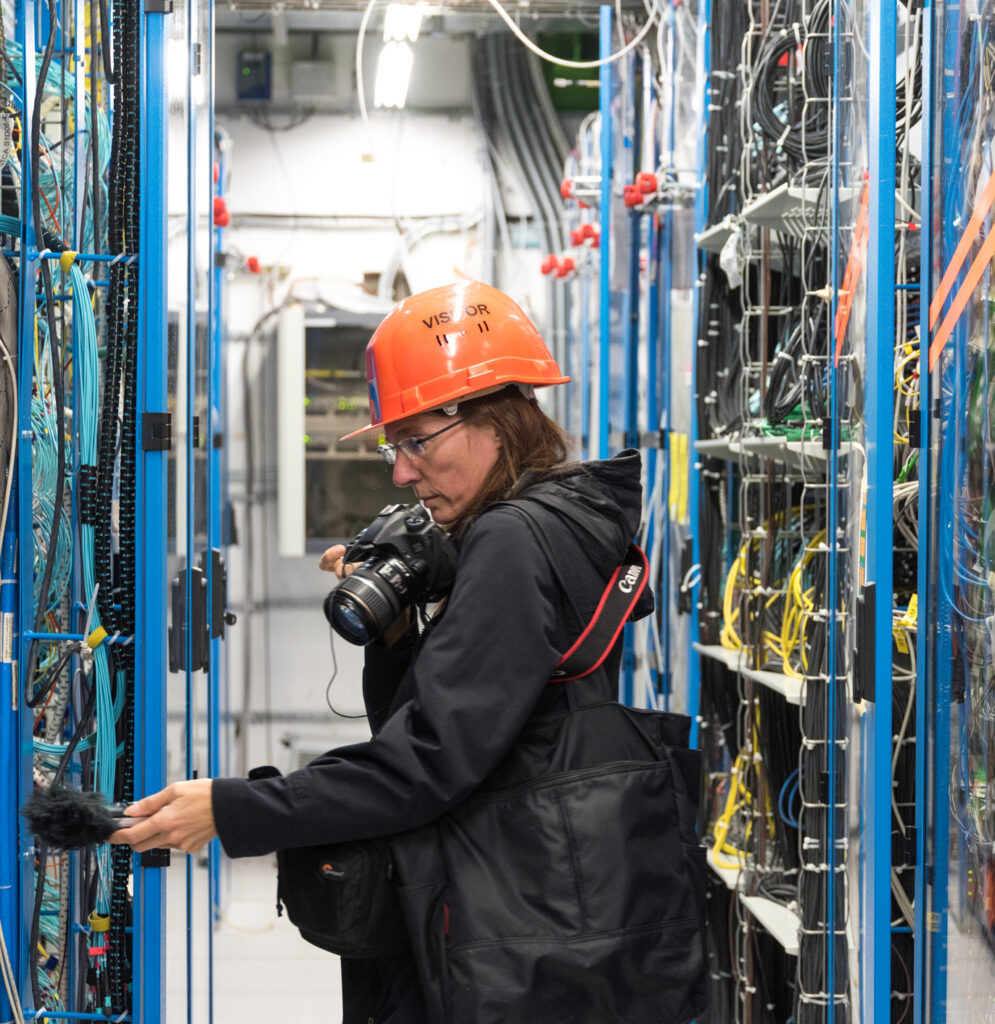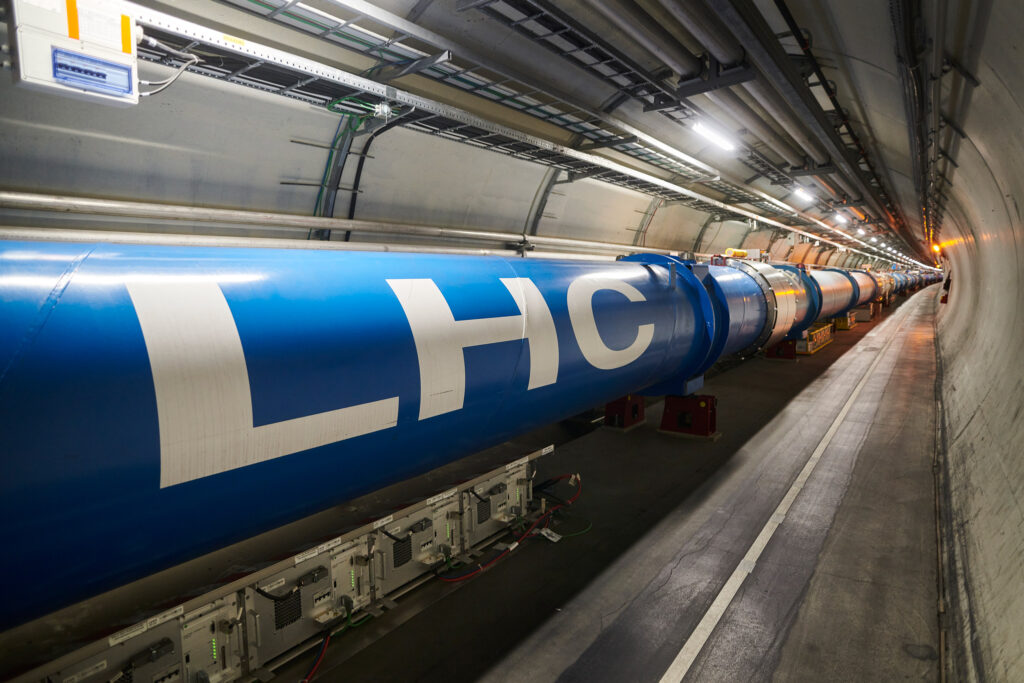
Artists across all creative disciplines are welcome to CERN to experience how fundamental research pursues the big questions about our universe
Arts at CERN is the arts program of CERN, the European Laboratory for Particle Physics in Geneva, Switzerland. Since 2012, when the first artist-in-residence arrived, we invite artists to experience how physicists use the world’s largest and most complex scientific instruments to explore the big questions about the universe.
Arts at CERN offers a wide range of programmes that merge art and science. These include research-driven Artistic Residencies that take place at CERN, as well as at other laboratories and partner institutions. Following these residencies, the Art Commissions program allows artists to further develop their research and create new artworks. Additionally, the Exhibitions and Events program connects the public with CERN through artistic expression. Our programs are often developed in collaboration with cultural and scientific organizations that share our mission and values. Together, we aim to enrich and contribute to the broader global network where art and science intersect.
More than 200 artists have participated in residencies, benefiting from being part of CERN’s scientific community. Over 35 new artworks have been supported since 2018. These productions are showcased in museums worldwide, including pieces by international artists like Black Quantum Futurism, Julius von Bismarck, James Bridle, Tania Candiani, Chloé Delarue, Ryoji Ikeda, Yunchul Kim, Haroon Mirza and Jack Jelfs, Richard Mosse, Mariele Neudecker, Mika Rottenberg, Leslie Thornton, and Suzanne Treister, among others.

Arts at CERN explores the cultural significance of fundamental research
Founded in 1954, CERN emerged from a vision of reviving excellence in scientific research in Europe and promoting peaceful collaboration. Since then, it has pushed the frontiers of human knowledge and technological innovation. In its early days, our understanding of the subatomic world was far from complete. Today, we know that visible matter is composed of a remarkably small number of particles governed by four fundamental forces.
CERN has been at the forefront of this scientific adventure, achieving foundational discoveries and driving innovation. Home to the Large Hadron Collider, the world’s most powerful particle accelerator, witnessed the discovery of the Higgs boson in 2012. CERN is also the birthplace of the World Wide Web, originally conceived as a tool for scientists to share data. The impact of CERN technology reaches wider society, with applications in medical therapies, environmental protection, and more.
Since its early days, CERN has been a place of inspiration for artists from different disciplines and backgrounds. Before the arts program was launched, renowned artists were drawn to the laboratory for its groundbreaking research and unique collaborative environment. As early as 1972, James Lee Byars became the first artist to visit the CERN laboratory, and he spent his time exploring the technical sites and facilities, as well as discussing ideas with physicists like John Bell. Other artists such as Mariko Mori, Gianni Motti, Cerith Wyn Evans, and John Berger were also attracted to CERN in the years that preceded the foundation of Arts at CERN.

CERN is a unique environment for creativity, collaboration, and artistic inquiry
Comprising experts and leaders from the arts and science sectors, the Cultural Advisory Board provides advice to shape the Laboratory’s arts programme and promote CERN’s engagement with art in collaboration with leading cultural organisations.
- Frédérick Bordry
- Former CERN Director for Accelerators and Technology and Chair of the Board, Geneva
- Elvira Dyangani Ose
- Director of MACBA, Barcelona
- Ulrike Erbslöh
- Managing Director of Fondation Beyeler, Riehen/Basel
- Patrick Gyger
- Director-General of Plateforme10, Lausanne
- Helga Timko
- Accelerator Physicist at CERN, Geneva
- Vicente Todolí
- Artistic Director of Pirelli HangarBicocca, Milan
- Giulia Bini
- Curator and Head
- Xenia Harder
- Residencies Coordinator
- Valeria Pietropaolo
- Administration
- Ana Prendes
- Assistant Curator and Communications Producer
- Former Heads of Arts at CERN
- Mónica Bello (2015-2025); Ariane Koek (2011-2015)
- Previous trainees
- Milos Louis Angelrath; Mirabelle Breidvik; Valentina Buzzi; Joséphine Deroma; Antonella Fetta; Emilia Rapone; Faye Willis Saulsbury




